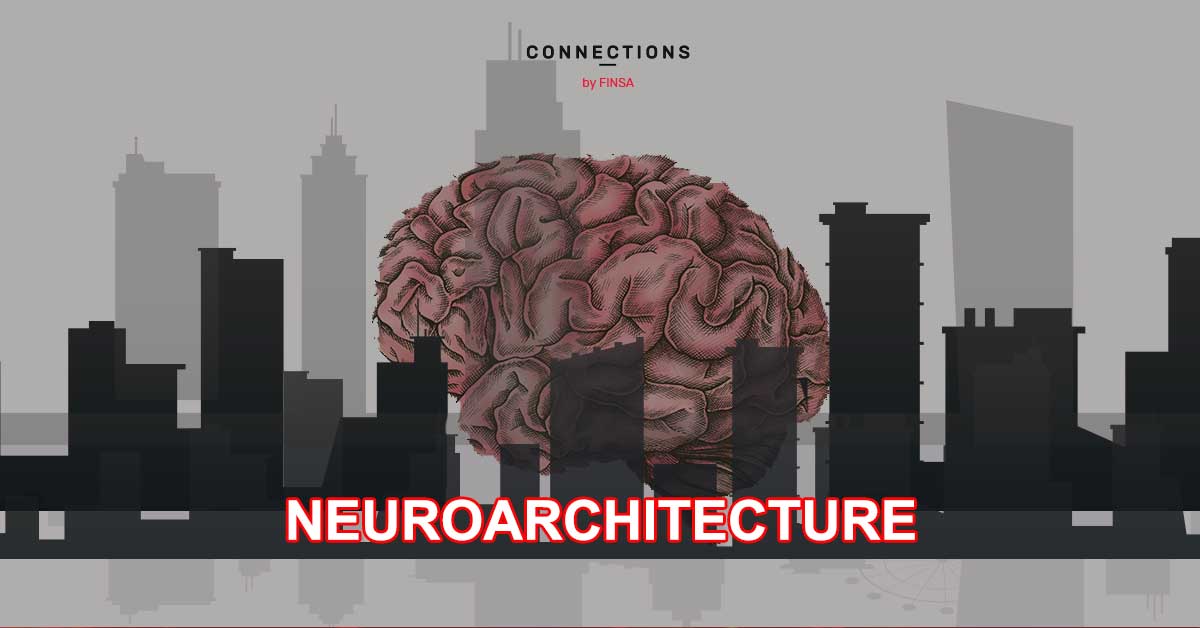Have you ever thought about all the time that we spend inside buildings? The WHO calculated that it’s between 80% and 90% of the time that we are awake, which is why it is so important that our emotional and physical health is considered when these places are designed. Neuroarchitecture looks in to what an office, a school, a hospital, or a house should be like in order to make us feel good.
Neuroarchitecture: in search of physical and mental wellbeing
Architects are always aware of the fact that their designs influence the people that use them and how they experience a place. They all know that elements such as the lighting or colour of a space determine the sensations that we have when we experience the design. Neuroarchitecture goes one step further and tries to understand how architectural surroundings influence our mental processes and, as such, our behaviour, in order to apply these discoveries to the design and construction of spaces that improve our wellbeing.
Architects and neuroscientists work together to design places where everything is determined by how the brains of its occupants work, from the distribution of the space to the colour of the walls. The challenge is understanding why there are places that encourage or hinder certain moods and then designing in an intelligent way in order to achieve a specific objective, be it a less stressful office, a hospital that facilitates recovery, or a school where one can learn better.
https://www.instagram.com/p/By3w_cgnbFL/?utm_source=ig_web_copy_link
The origins of neuroarchitecture
Researcher Jonas Salk was experiencing a mental block, so he went on a holiday to Assisi, where he found the key to the discovery of the polio vaccine. Convinced that the design of the Italian city had provided the right surroundings to allow his ideas to flow, he contacted the architect Louis Khan to create a research centre that would reproduce these conditions and which would encourage creativity among the researchers. The Salk Institute was inaugurated in 1965, setting a benchmark for spaces in neuroarchitecture.
But the defining moment for architecture came from Fred Gage, a neuroscientist who, in 1998, discovered that the brain continued producing neurons in adulthood, which led him to become interested in how our surroundings influence the structure and functioning of our brain. The next step was founding The Academy of Neuroscience for Architecture alongside John Eberhard, with the goal of “investigating what the design of a space in the 21st century needs to be like in order to improve our wellbeing, increase performance, and reduce stress and fatigue in the cities”.
How neuroarchitecture works
“Pure” neuroarchitecture is based on instruments of neurobiology, such as electrocardiograms, electroencephalograms, or sweat sensors, in order to objectively measure how our bodies react to certain architectural stimuli with the goal of taking the emotions produced by architecture into account in the design process. However, today’s architectural studies do not have all these scientific apparatuses, nor the technology or the time required for the handling of the data to then apply the conclusions to their designs.
Institutions such as The Academy of Neuroscience for Architecture in San Diego or the Neuroarchitecture Research Group LENI at the Universidad Politécnica de Valencia (The Polytechnic University of Valencia) are developing studies that are based on scientific methodology. One example is the LENI study to improve the design of paediatric waiting rooms. How do they work? First, they surveyed a group of people about elements of the waiting rooms in order to identify which ones were more relaxing. Then they designed an environment which enhanced these elements. During this process, virtual simulation was a very useful tool for neuroarchitecture, as it allows the user to experience a space, despite the fact that it has not yet been constructed, and to study the influence of this space on their behaviour.

How does architecture influence our behaviour
We are still a long way from designing specific projects guided exclusively by the brains of the future users of the space, but research in neuroarchitecture describes patterns of common behaviour when we are faced with certain stimuli.
- Temperature: a well-balanced temperature is important for creating comfortable surroundings, given that our brain is very sensitive to sudden temperature changes which may impede cognitive performance and, on an emotional level, result in hostility.
- Lighting: insufficient lighting can change our circadian rhythms, but the level and temperature of the colour also affect our mood and activity. While an intense, white light activates our brains, warm lighting reduces stress.
- Plants: styles such as biophilic or ecological design are based on evidence regarding the beneficial effect that green surroundings and natural materials have on our health.
- Colours: each colour acts on a different area of our brain and affects our mood. Thanks to science, we have discovered that pink calms our nerves and reduces anger, while warm colours improve productivity and concentration, making them ideal for work environments.
- Scents: our sense of smell is one that is often forgotten in architecture, but the right scent can enhance a space. For example, natural scents encourage relaxation.
- The use of curves: rounded edges help us relax more than sharp angles.
Neuroarchitecture is ultimately another tool that can help us to design cities of the future that will improve the health and social relationships of their inhabitants. Taking into account that, according to the UN, two thirds of the world’s population will be living in urban environments by 2050, applying neuroarchitecture to urban planning could result in cities that are tailor-made for their citizens by including elements that are beneficial for our minds in their designs.




